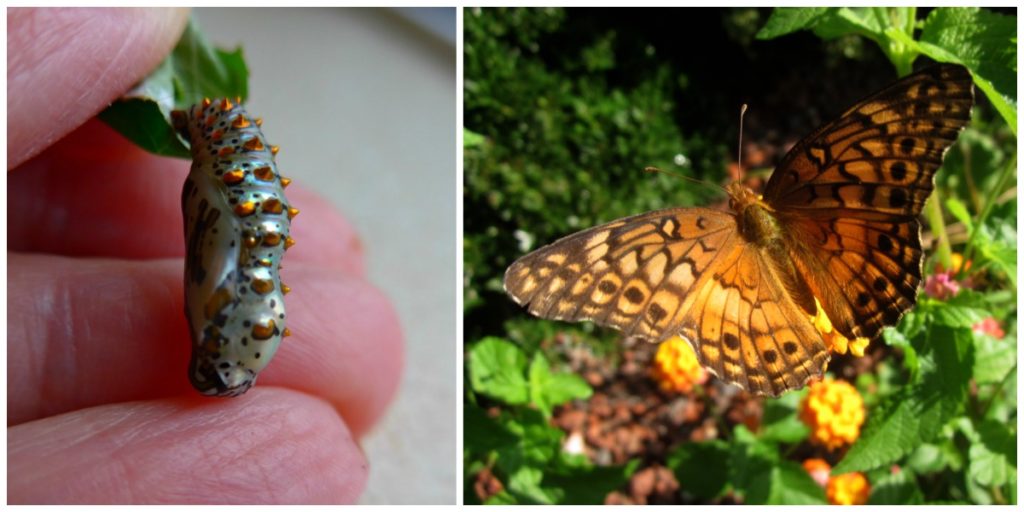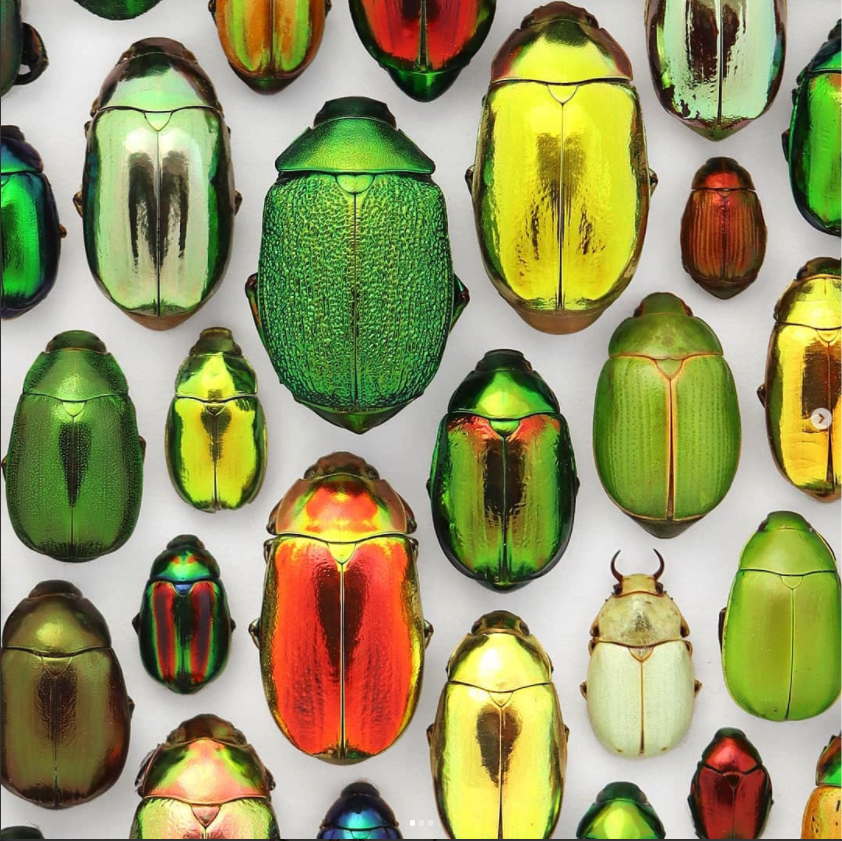The chrysalises of some butterflies are like miniature golden ornaments. The Orange-spotted Tiger Clearwing (Mechanitis polymnia) and Common Crow (Euploea core) are two types of butterflies that create these beautiful gold chrysalises. In fact, the word ¨chrysalis” is derived from the Greek word ¨chrysos¨ meaning ¨gold.¨

These shiny, metallic-looking chrysalises are thought to help protect the growing butterfly by fooling potential predators. The shiny chrysalises might look like water droplets on leaves. Or, they just might be so shiny that they reflect their surrounding areas like a mirror. Many reflective organisms like that end up being more camouflaged in their natural habitats because the reflections reflect their surroundings, e.g. chrysalis sitting in a green forest surrounded by green leaves ends up looking green.

For hungry animals that get too close, the mirror effect might also be enough scare them off. Birds, lizards and other visual hunters like jumping spiders scour native plants for prey, and reflected movement (or the sudden appearance of their own reflected form) would likely initiate a bail sequence.

These shiny structures, even though they look like they are made of metal are actually made of chitin, the same substance that gives some insects like beetles their shiny look. Read more here: https://askentomologists.com/2016/12/08/striking-gold/

